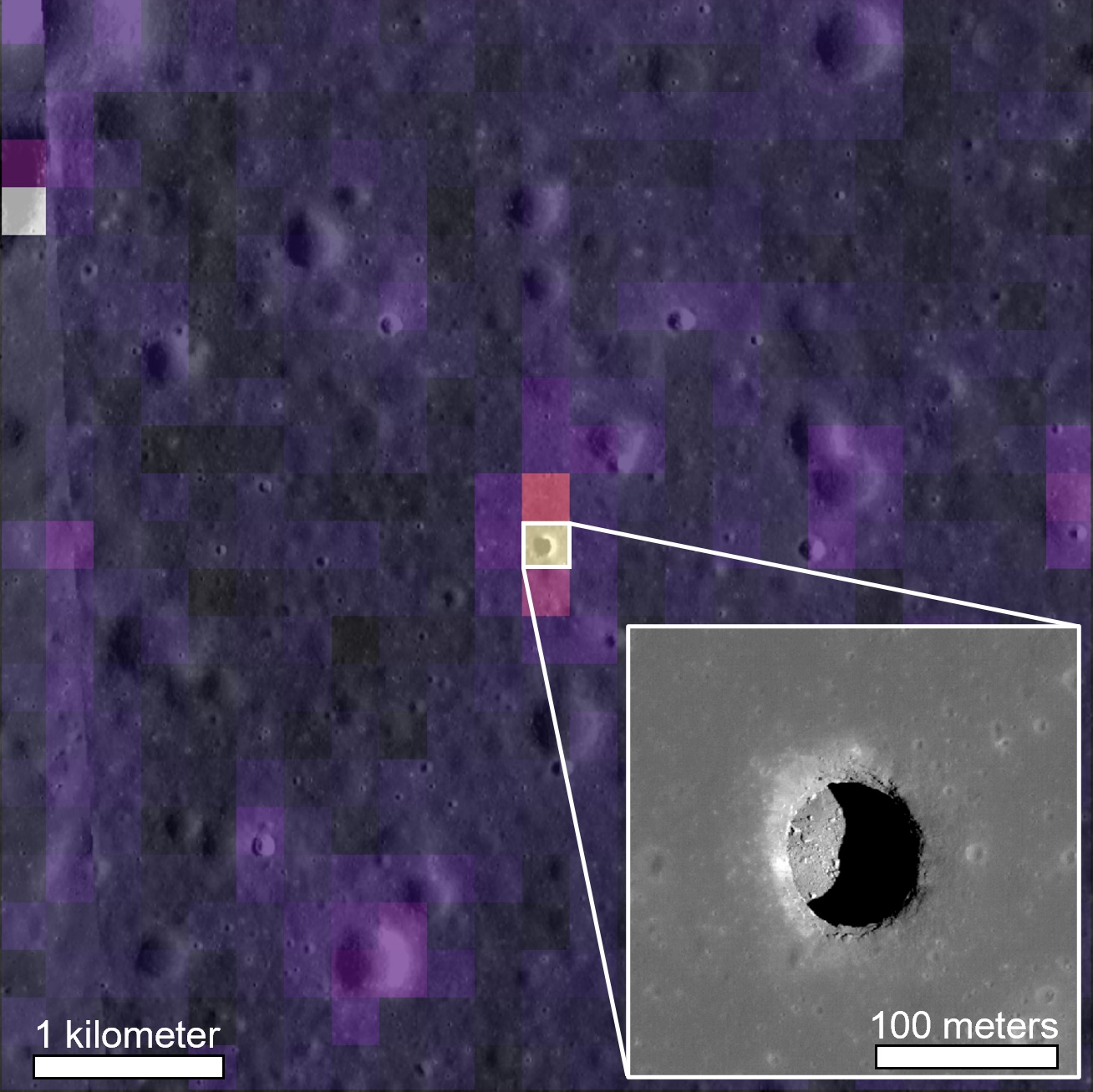
EPSS PhD student Tyler Horvath and EPSS Professor David Paige have found that shaded areas of the Moon’s pits contain temperature ranges hospitable to human life. Below is their summary of their findings, originally published in the Geophysical Research Letters journal:
Since the discovery of pits on the Moon by JAXA’s SELENE spacecraft in 2009, there has been interest in whether they provide access to caves that could be explored by rovers and astronauts. These features are likely created by the ceiling of a lava tube (or more generally, cave) collapsing. Using data from the Diviner instrument aboard the Lunar Reconnaissance Orbiter, which has been continuously measuring the temperature of the lunar surface for over 11 years, we thoroughly characterized the environment of one prominent pit. Located in Mare Tranquillitatis, the pit’s thermal environment is more hospitable compared to anywhere else on the Moon, with temperatures varying minimally around a comfortable 17°C (or 63° F) wherever the Sun does not shine directly. If a cave extends from a pit such as this, it too would maintain this comfortable temperature throughout its length, varying by less than 1°C over an entire lunar day. Although we cannot be completely certain of a cave’s existence through remote observations, such features would open the door for future exploration and habitation on the Moon: they could provide shelter from dramatic temperature variations present elsewhere on the lunar surface.
Read their full paper here, and check out their CNN feature here.
